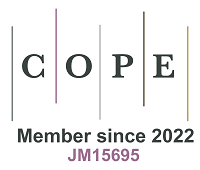REFERENCES
1. Fratiglioni L, De Ronchi D, Agüero-Torres H. Worldwide prevalence and incidence of dementia. Drugs Aging 1999;15:365-75.
2. Edler MK, Mhatre-Winters I, Richardson JR. Microglia in aging and Alzheimer's disease: a comparative species review. Cells 2021;10:1138.
3. Ganguly U, Kaur U, Chakrabarti SS, et al. Oxidative stress, neuroinflammation, and NADPH oxidase: implications in the pathogenesis and treatment of Alzheimer's disease. Oxid Med Cell Longev 2021;2021:7086512.
4. Price BR, Johnson LA, Norris CM. Reactive astrocytes: the nexus of pathological and clinical hallmarks of Alzheimer's disease. Ageing Res Rev 2021;68:101335.
5. Silagi M, Bertolucci P, Ortiz K. Naming ability in patients with mild to moderate Alzheimer’s disease: what changes occur with the evolution of the disease? Clinics 2015;70:423-8.
6. Aniwattanapong D, Tangwongchai S, Supasitthumrong T, et al. Validation of the Thai version of the short Boston Naming Test (T-BNT) in patients with Alzheimer's dementia and mild cognitive impairment: clinical and biomarker correlates. Aging Ment Health 2019;23:840-50.
7. Tangwongchai S, Supasitthumrong T, Hemrunroj S, et al. In Thai nationals, the ApoE4 allele affects multiple domains of neuropsychological, biobehavioral, and social functioning thereby contributing to Alzheimer's disorder, while the ApoE3 allele protects against neuropsychiatric symptoms and psychosocial deficits. Mol Neurobiol 2018;55:6449-62.
8. Bettcher BM, Olson KE, Carlson NE, et al. Astrogliosis and episodic memory in late life: higher GFAP is related to worse memory and white matter microstructure in healthy aging and Alzheimer's disease. Neurobiol Aging 2021;103:68-77.
9. Morris G, Berk M, Maes M, Puri BK. Could Alzheimer's disease originate in the periphery and if so how so? Mol Neurobiol 2019;56:406-34.
10. Liu CC, Liu CC, Kanekiyo T, Xu H, Bu G. Apolipoprotein E and Alzheimer disease: risk, mechanisms and therapy. Nat Rev Neurol 2013;9:106-18.
11. Butterfield DA, Mattson MP. Apolipoprotein E and oxidative stress in brain with relevance to Alzheimer's disease. Neurobiol Dis 2020;138:104795.
12. Kloske CM, Wilcock DM. The important interface between apolipoprotein E and neuroinflammation in Alzheimer's disease. Front Immunol 2020;11:754.
13. Supasitthumrong T, Tunvirachaisakul C, Aniwattanapong D, et al. Peripheral blood biomarkers coupled with the apolipoprotein E4 genotype are strongly associated with semantic and episodic memory impairments in elderly subjects with amnestic mild cognitive impairment and Alzheimer's disease. J Alzheimers Dis 2019;71:797-811.
14. Lennon MJ, Makkar SR, Crawford JD, Sachdev PS. Midlife hypertension and Alzheimer's disease: a systematic review and meta-analysis. J Alzheimers Dis 2019;71:307-16.
15. Lee SH, Han K, Cho H, et al. Variability in metabolic parameters and risk of dementia: a nationwide population-based study. Alzheimers Res Ther 2018;10:110.
16. Carranza-Naval MJ, Vargas-Soria M, Hierro-Bujalance C, et al. Alzheimer's disease and diabetes: role of diet, microbiota and inflammation in preclinical models. Biomolecules 2021;11:262.
17. Lee HJ, Seo HI, Cha HY, Yang YJ, Kwon SH, Yang SJ. Diabetes and Alzheimer's disease: mechanisms and nutritional aspects. Clin Nutr Res 2018;7:229-40.
19. Brambati SM, Belleville S, Kergoat MJ, Chayer C, Gauthier S, Joubert S. Single- and multiple-domain amnestic mild cognitive impairment: two sides of the same coin? Dement Geriatr Cogn Disord 2009;28:541-9.
20. Michaud TL, Su D, Siahpush M, Murman DL. The risk of incident mild cognitive impairment and progression to dementia considering mild cognitive impairment subtypes. Dement Geriatr Cogn Dis Extra 2017;7:15-29.
21. Simeonova D, Stoyanov D, Leunis JC, Murdjeva M, Maes M. Construction of a nitro-oxidative stress-driven, mechanistic model of mood disorders: a nomothetic network approach. Nitric Oxide 2021;106:45-54.
22. Maes M, Moraes JB, Bonifacio KL, et al. Towards a new model and classification of mood disorders based on risk resilience, neuro-affective toxicity, staging, and phenome features using the nomothetic network psychiatry approach. Metab Brain Dis 2021;36:509-21.
23. Stoyanov D, Maes MH. How to construct neuroscience-informed psychiatric classification? World J Psychiatry 2021;11:1-12.
24. Morris JC. The clinical dementia rating (CDR): current version and scoring rules. Neurology 1993;43:2412-4.
25. Medical technology assessment project committee. The comparison of the test performance between the MMSE-Thai 2002 and the TMSE for dementia screening in the elderly. Bangkok, Thailand: Thai Geriatric Medicine Institute, Ministry of Public Health; 2008.
27. McKhann G, Drachman D, Folstein M, Katzman R, Price D, Stadlan EM. Clinical diagnosis of Alzheimer's disease: report of the NINCDS-ADRDA Work Group under the auspices of Department of Health and Human Services Task Force on Alzheimer's disease. Neurology 1984;34:939-44.
28. Crowe M, Andel R, Wadley V, et al. Subjective cognitive function and decline among older adults with psychometrically defined amnestic MCI. Int J Geriatr Psychiatry 2006; 21:1187-92.
29. Morris JC, Heyman A, Mohs RC, et al. The Consortium to Establish a Registry for Alzheimer's Disease (CERAD). Part I. Clinical and neuropsychological assessment of Alzheimer's disease. Neurology 1989;39:1159-65.
30. Benjamini Y, Hochberg Y. Controlling the false discovery rate: a practical and powerful approach to multiple testing. J Royal Statistics Soc Series b (Methodological) 1995;57:289-300.
31. Ringle CM, da Silva D, Bido D. Structural equation modeling with the SmartPLS. Brazilian Journal of Marketing 2015:13.
32. Tunvirachaisakul C, Supasitthumrong T, Tangwongchai S, et al. Characteristics of mild cognitive impairment using the Thai version of the consortium to establish a registry for Alzheimer's disease tests: a multivariate and machine learning study. Dement Geriatr Cogn Disord 2018;45:38-48.
33. Hemrungrojn S, Tangwongchai S, Charoenboon T, et al. Use of the Montreal Cognitive Assessment Thai version (MoCA) to discriminate amnestic mild cognitive impairment from Alzheimer’s disease and healthy controls: machine learning results. Running head: MoCA and amnestic mild cognitive impairment. Preprints, 2021.
34. Ismail Z, Smith EE, Geda Y, et al. ISTAART Neuropsychiatric Symptoms Professional Interest Area. Neuropsychiatric symptoms as early manifestations of emergent dementia: Provisional diagnostic criteria for mild behavioral impairment. Alzheimers Dement 2016;12:195-202.
35. Johansson M, Stomrud E, Insel PS, et al. Mild behavioral impairment and its relation to tau pathology in preclinical Alzheimer's disease. Transl Psychiatry 2021;11:76.
36. Schrag M, Mueller C, Zabel M, et al. Oxidative stress in blood in Alzheimer's disease and mild cognitive impairment: a meta-analysis. Neurobiol Dis 2013;59:100-10.







